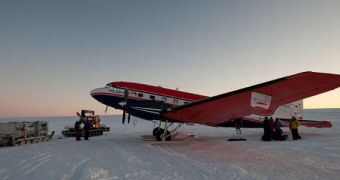Scientists in the Antarctic will mark next week's 100-year anniversary of Roald Amundsen's trip to the South Pole on the field, conducting measurements to validate data sent from orbit by the European Space Agency's (ESA) CryoSat mission.
I cannot stop but wonder how those early explorers must have felt, all alone on a large continent that tried its best to kill them as fast as it could. Their expedition was surely a far-cry from modern ones, which are relatively comfortable, and many times safer.
Still, researchers don't shy away from investigating the South Pole even under harsh conditions, since doing so may hold the key to understanding how the planet functions, and how climate change will evolve over the coming centuries.
CryoSat was built specifically for this purpose, but experts need to ensure the data collected through its state-of-the-art equipment is not in some way hampered or distorted by some unknown factor. This is why it's so important for scientists to be on the field over the course of the Antarctic summer.

 14 DAY TRIAL //
14 DAY TRIAL //